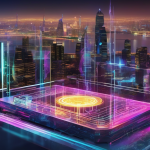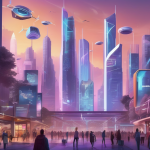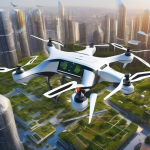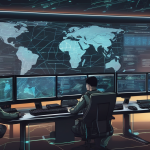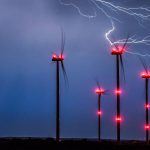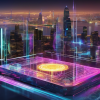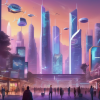AI in Filmmaking: Transforming Special Effects and Animation
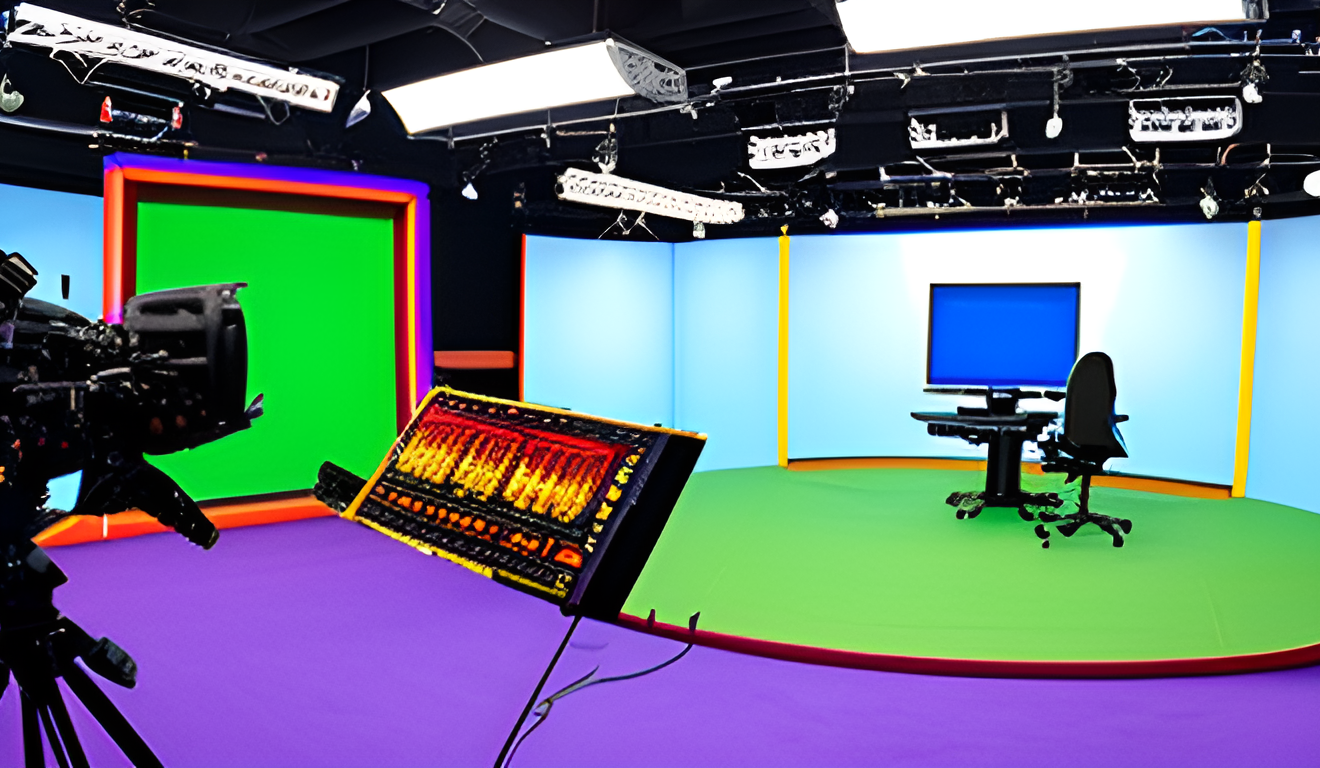
The world of filmmaking is undergoing a remarkable transformation thanks to the integration of artificial intelligence. This cutting-edge technology is not just a passing trend; it’s reshaping how films are made, particularly in the realms of special effects and animation. Imagine a filmmaker who can focus solely on the story while AI takes care of the intricate details—it’s like having a digital assistant that never tires! As AI continues to evolve, it brings with it a wave of creativity, efficiency, and enhanced viewer engagement that filmmakers have only dreamed of until now.
One of the most exciting aspects of AI in filmmaking is its ability to automate tedious tasks. Think about the countless hours spent on visual effects—now, with AI, those hours can be cut down significantly. For instance, AI can analyze scenes and automatically generate effects that would have taken human artists days or even weeks to create. This not only saves time but also allows for a greater focus on the artistic vision of the film.
Furthermore, AI is paving the way for unprecedented levels of realism in visual effects. With advanced algorithms that can mimic real-world physics and lighting, filmmakers can create imagery that captivates audiences like never before. Imagine watching a scene where every explosion, every flicker of light, and every shadow is rendered with such precision that it feels almost real. This level of detail enhances the overall viewing experience, making it more immersive and engaging.
In the realm of animation, AI is a game-changer. It allows for quicker production times and the creation of more fluid, lifelike characters. Thanks to machine learning, animated characters can now exhibit emotions and movements that resonate deeply with audiences. Whether it’s a joyful leap or a sorrowful gaze, AI enables animators to breathe life into their creations, making storytelling richer and more impactful.
As we look to the future, it’s clear that the role of AI in filmmaking will only grow. The possibilities are endless, and the combination of human creativity with AI’s capabilities promises to lead us into a new era of cinematic excellence. So, buckle up—this is just the beginning of an exciting journey in the world of film!
The Rise of AI in Film Production
In recent years, artificial intelligence has emerged as a game-changer in the film industry, transforming how films are produced from start to finish. With AI technologies becoming more sophisticated, filmmakers are finding innovative ways to integrate these tools into their creative processes. Imagine a world where tedious tasks are handled by machines, allowing directors and writers to focus solely on the art of storytelling. Sounds like a dream, right? Well, that dream is becoming a reality!
AI is not just a buzzword; it is a powerful ally that is streamlining various aspects of film production. For instance, AI can analyze scripts and provide insights on potential audience engagement, helping filmmakers tailor their stories to resonate with viewers. Additionally, AI-driven tools can assist in scheduling, budgeting, and even casting, making the pre-production phase more efficient than ever.
Moreover, the advent of machine learning algorithms allows for the automation of numerous repetitive tasks. These algorithms can sift through vast amounts of data, identifying patterns and trends that can inform creative decisions. This means that filmmakers can now spend less time on logistical challenges and more time crafting compelling narratives that captivate audiences.
To illustrate the impact of AI, consider the following table showcasing key areas where AI is making a difference in film production:
| Area | AI Impact |
|---|---|
| Script Analysis | Provides insights on audience engagement and narrative structure |
| Scheduling | Optimizes production timelines and resource allocation |
| Budgeting | Helps in forecasting costs and managing finances |
| Casting | Identifies ideal actors based on character requirements |
As AI continues to evolve, it is set to redefine the filmmaking landscape, making it more efficient, creative, and engaging. The rise of AI in film production is not just a trend; it’s a revolution that promises to enhance the way stories are told on screen.
Enhancing Visual Effects with AI
Artificial intelligence is not just a buzzword; it’s a game-changer in the realm of visual effects. Imagine a world where filmmakers can create breathtaking visuals without getting bogged down by the nitty-gritty of technical tasks. AI is making that dream a reality. By automating tedious processes, AI allows creative minds to focus on what they do best: telling captivating stories. This technology is revolutionizing how visual effects are conceived and executed, leading to a new era of cinematic experiences.
One of the most exciting aspects of AI in visual effects is its ability to enhance realism. Gone are the days when audiences could easily spot CGI elements. With AI algorithms analyzing countless frames, filmmakers can achieve stunning levels of detail that create an immersive experience. For instance, AI can simulate realistic lighting and shadows, making digital characters blend seamlessly into live-action footage. It’s like giving filmmakers a magic wand that transforms their wildest visions into tangible realities.
Furthermore, AI-driven tools can predict and generate visual effects based on the narrative context. This means that filmmakers can experiment with various styles and effects without the long wait times typically associated with traditional methods. For example, AI can quickly render multiple iterations of a scene, allowing directors to choose the most visually appealing option on the fly. This level of flexibility not only saves time but also enhances the creative process, pushing the boundaries of what’s possible in filmmaking.
To put it simply, AI is the secret ingredient that is spicing up visual effects in the film industry. As technology continues to evolve, we can expect even more groundbreaking advancements that will leave audiences on the edge of their seats, eagerly anticipating the next cinematic masterpiece. The future is bright, and it’s powered by AI!
AI-Driven Animation Techniques
Artificial intelligence is not just a buzzword; it’s a game-changer in the world of animation. Imagine a world where animators can create mesmerizing visuals without getting bogged down by repetitive tasks. Well, that world is here! With AI-driven animation techniques, filmmakers are experiencing a creative renaissance that allows them to focus on what truly matters: storytelling and character development.
One of the most exciting advancements is the use of machine learning algorithms. These algorithms analyze vast amounts of data to understand how characters move and interact with their environments. The result? Characters that exhibit lifelike movements and emotions, making audiences feel more connected to the story. It’s like giving a heartbeat to a character that once felt flat and lifeless. Think about it—when you see a character express joy, sadness, or anger, it resonates with you on a deeper level, enhancing the overall viewing experience.
Moreover, generative adversarial networks, or GANs, are pushing the boundaries of creativity. By generating unique animation styles, GANs allow filmmakers to explore different aesthetics and visual narratives. This opens up a treasure trove of possibilities, enabling artists to experiment with vibrant colors, surreal landscapes, and even abstract forms that were previously unimaginable. It’s akin to having a magic paintbrush that can create an entire universe with just a few strokes!
Real-time rendering is another breakthrough that AI brings to the table. Filmmakers can now visualize scenes instantly, making on-the-fly adjustments that enhance the flow and coherence of the story. Imagine being able to tweak a character’s expression or adjust a scene’s lighting with just a click. This level of flexibility not only saves time but also allows for a more dynamic storytelling process.
In conclusion, AI-driven animation techniques are revolutionizing the industry, making it possible for filmmakers to create stunning, emotionally engaging content. As these technologies continue to evolve, we can only imagine the breathtaking stories that await us on the big screen.
Machine Learning in Character Animation
Machine learning is revolutionizing the way animated characters come to life on screen. Imagine a world where characters move with such realism that they evoke genuine emotions from the audience. This is no longer just a dream; it’s the reality brought forth by advanced machine learning algorithms. By analyzing vast amounts of motion data, these algorithms can mimic human movements, creating lifelike animations that resonate with viewers.
One of the key benefits of using machine learning in character animation is the ability to enhance emotional engagement. When characters exhibit fluid movements and realistic expressions, they become more relatable. For instance, a character that can express joy, sadness, or surprise through subtle body language can significantly deepen the viewer’s connection to the story. This technology allows animators to focus on the artistic aspects of storytelling, while the algorithms handle the intricate details of movement.
Moreover, the potential for speed in production is astounding. Traditionally, animators would spend countless hours perfecting each frame to achieve the desired look. With machine learning, the process is streamlined. For example, an animator can input basic movements, and the software will generate the in-between frames, saving time and allowing for quicker iterations. This not only enhances productivity but also opens the door for more creative experimentation.
As we look to the future, the integration of machine learning in character animation promises to push the boundaries of creativity even further. Filmmakers will have access to tools that not only automate tedious tasks but also inspire new ideas, making animation a more dynamic and engaging medium. The combination of human creativity and machine learning is set to redefine what’s possible in the realm of animated storytelling.
Generative Adversarial Networks (GANs) in Animation
Generative Adversarial Networks, or GANs, are revolutionizing the world of animation in ways that were once thought to be the stuff of science fiction. Imagine a world where artists can simply sketch a rough outline, and within moments, a fully animated sequence springs to life. This is precisely what GANs are making possible. By utilizing two neural networks that work in tandem—a generator and a discriminator—GANs can produce unique animation styles that push the boundaries of creativity.
At the heart of GANs is the idea of collaboration between these two networks. The generator creates images, while the discriminator evaluates them, providing feedback that helps refine the output. This process is akin to a painter who continuously receives critiques from a gallery curator, ultimately leading to a masterpiece. As a result, filmmakers are now able to:
- Create diverse animation styles that were previously unattainable.
- Experiment with visual storytelling in real-time.
- Reduce the time spent on character design and scene creation.
Moreover, the use of GANs allows for a level of detail and realism that can captivate audiences on a deeper emotional level. For instance, consider how traditional animation techniques often require painstaking frame-by-frame adjustments. With GANs, animators can generate fluid movements and expressions that resonate with viewers, enhancing the overall narrative experience.
As filmmakers continue to embrace this cutting-edge technology, we can expect a surge in innovative animated films that challenge conventional storytelling methods. The future is bright for animation, and GANs are at the forefront, enabling creators to explore uncharted territories in visual art. In a nutshell, GANs are not just a tool; they are a game-changer in the animation landscape, unlocking new realms of creativity and imagination.
Real-Time Rendering with AI
The advent of real-time rendering powered by artificial intelligence is a game-changer for filmmakers. Imagine being able to visualize a scene instantly, making adjustments on the fly, and seeing the results in real-time. This technology not only enhances creativity but also significantly reduces production time. Filmmakers can experiment with lighting, textures, and camera angles without the long waits traditionally associated with rendering.
AI algorithms analyze vast amounts of data to optimize rendering processes, allowing for high-quality graphics that were once only achievable in post-production. This means that directors can focus on their vision rather than getting bogged down by technical limitations. For instance, AI can predict how light interacts with different surfaces, creating realistic shadows and reflections that add depth to scenes.
Moreover, the integration of AI in rendering workflows leads to a more collaborative environment. Teams can work together seamlessly, sharing insights and making decisions based on real-time feedback. This is particularly beneficial during the pre-visualization stage, where concepts are still being fleshed out. With AI, the possibilities are endless, and the creative process becomes more fluid and dynamic.
To illustrate the impact of AI on rendering, consider the following table that highlights key benefits:
| Benefit | Description |
|---|---|
| Speed | Real-time rendering drastically reduces the time needed to visualize scenes. |
| Accuracy | AI enhances the realism of graphics through advanced light simulation. |
| Collaboration | Facilitates teamwork by allowing instant feedback and adjustments. |
In conclusion, real-time rendering with AI is not just a trend; it’s a revolution that is redefining how filmmakers approach their craft. As this technology continues to evolve, we can expect even more innovative applications that will push the boundaries of storytelling and visual artistry.
AI in Post-Production
In the fast-paced world of filmmaking, post-production is where the magic truly happens. It’s the stage where raw footage transforms into a polished masterpiece, and with the advent of artificial intelligence, this process has become more streamlined and efficient than ever. AI tools are revolutionizing the way filmmakers approach editing, color grading, and sound design, significantly reducing the time and effort required to achieve high-quality results.
One of the standout features of AI in post-production is its ability to assist in editing. Traditional editing can be a painstaking task, often requiring hours of sifting through footage to find the right clips. However, AI-driven editing software can recognize key scenes and suggest cuts, which not only saves time but also enhances the storytelling process. Imagine having a virtual assistant that knows exactly what you’re looking for and can present it to you in a matter of minutes!
Moreover, AI plays a crucial role in color grading. By analyzing the visual tone of a film, AI can suggest adjustments that enhance the overall aesthetic. This ensures that the final product is not only visually stunning but also consistent throughout. For example, if a scene feels too dark or too warm, AI tools can automatically adjust the color palette to match the desired mood, allowing filmmakers to focus on the narrative rather than technicalities.
Sound design, another critical aspect of post-production, is also benefiting from AI advancements. AI can generate soundscapes and effects that elevate the viewing experience, making it more immersive for the audience. Whether it’s the rustle of leaves in a forest scene or the distant sounds of a bustling city, AI can create realistic audio environments that enhance storytelling.
As we look to the future, the integration of AI in post-production is set to grow even more profound. The possibilities are endless, and filmmakers can expect to see even more innovative tools that will continue to reshape the industry landscape. With AI handling the technical aspects, creators can unleash their full potential, focusing on what they do best: telling compelling stories that resonate with audiences.
Automated Editing Software
In the fast-paced world of filmmaking, time is of the essence. Filmmakers are always on the lookout for ways to streamline their processes, and has emerged as a game-changer. Imagine having a virtual assistant that not only helps you sift through hours of footage but also suggests the best cuts and transitions. Sounds like a dream, right? Well, that dream is now a reality!
These intelligent tools utilize advanced artificial intelligence algorithms to analyze video content, recognizing key scenes and moments that resonate with the audience. By employing machine learning, these software solutions can learn from previous edits, adapting to a filmmaker’s unique style over time. This means less time spent on tedious tasks and more focus on the creative aspects of storytelling. For instance, AI can quickly identify and compile highlights from a long shoot, ensuring that no crucial moment is overlooked.
Moreover, many automated editing platforms offer features such as:
- Scene Detection: Automatically identifies and categorizes scenes based on visual and audio cues.
- Smart Cuts: Suggests edits that enhance pacing and flow, keeping the audience engaged.
- Color Correction: Applies consistent color grading across clips, maintaining visual harmony.
These features not only save time but also enhance the overall quality of the final product. As a result, filmmakers can deliver polished films that captivate audiences without the usual stress associated with the editing process. The integration of is not just a trend; it’s a revolution that is reshaping the landscape of film production.
As we look to the future, we can expect even more sophisticated tools to emerge, pushing the boundaries of what’s possible in film editing. With AI at the helm, the creative potential is limitless, paving the way for a new era in filmmaking.
AI for Sound Design
Artificial intelligence is making significant strides in the realm of sound design, revolutionizing how filmmakers create auditory experiences that complement their visual storytelling. Imagine walking into a theater, and as the lights dim, you’re enveloped in a rich tapestry of sounds that enhance every moment on screen. This is no longer a dream; it’s a reality brought to life by AI.
One of the most exciting aspects of AI in sound design is its ability to automatically generate soundscapes. This technology allows sound designers to craft intricate audio environments with minimal effort. For instance, AI can analyze the emotional tone of a scene and suggest appropriate sounds that amplify the mood, whether it’s a suspenseful thriller or a heartwarming romance. This not only saves time but also opens up new creative avenues for artists.
Moreover, AI tools can assist in creating unique sound effects that are tailored to specific scenes. By utilizing machine learning algorithms, sound designers can train AI models on a vast array of sound samples. The result? An almost infinite library of sounds that can be manipulated and customized to fit the filmmaker’s vision. This capability ensures that every sound element is not just an afterthought but a carefully crafted piece of the overall narrative.
In addition, AI can help in the mixing and mastering process. By analyzing the audio tracks, AI can suggest adjustments to balance levels, enhance clarity, and ensure that the final product is polished and professional. This efficiency allows sound designers to focus more on the creative aspects rather than getting bogged down by technical details.
As we look to the future, the integration of AI in sound design is set to expand even further. With ongoing advancements, we can expect even more sophisticated tools that will not only streamline the sound design process but also elevate the overall cinematic experience. The potential for innovation is limitless, and it’s an exciting time for filmmakers and sound designers alike.
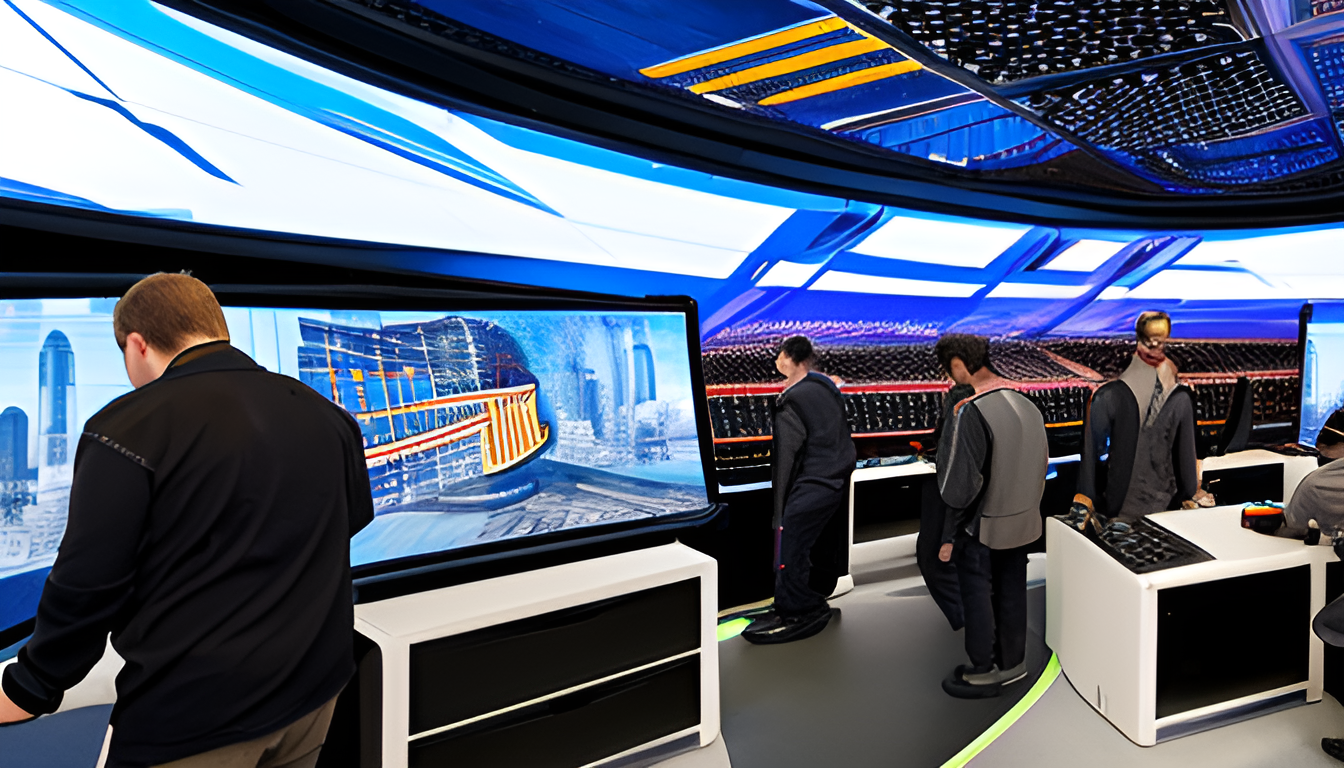
Future Trends in AI and Filmmaking
The future of AI in filmmaking is not just promising; it’s downright exhilarating! As technology continues to evolve, we can expect a wave of innovations that will further transform how films are created and experienced. Imagine a world where filmmakers can harness the power of AI to not only enhance their storytelling but also to push the boundaries of creativity in ways we’ve never seen before.
One of the most exciting trends on the horizon is the development of intelligent scriptwriting tools. These AI-driven platforms will analyze successful screenplays and generate new story ideas, character arcs, and dialogue, effectively serving as a creative partner for writers. Just think about it: a machine that understands storytelling nuances and can help you craft the next blockbuster hit!
Moreover, as AI technology advances, we can anticipate even more sophisticated virtual production techniques. Filmmakers will be able to create immersive environments in real-time, allowing for unprecedented levels of creativity. With tools that can simulate lighting, weather, and even crowd dynamics, the possibilities are limitless. This technology will not only save time but also reduce costs, making high-quality filmmaking accessible to a broader range of creators.
Additionally, the integration of AI in audience analysis will revolutionize how films are marketed and distributed. AI algorithms will analyze viewer preferences and behaviors, enabling studios to tailor their marketing strategies effectively. This means that filmmakers can create content that resonates more deeply with audiences, leading to greater engagement and box office success.
As we look ahead, it’s clear that the intersection of AI and filmmaking will continue to evolve, creating a rich tapestry of opportunities for filmmakers and audiences alike. With each technological leap, we are inching closer to a future where creativity knows no bounds, and storytelling becomes an even more immersive experience.
Frequently Asked Questions
- How is AI changing the filmmaking industry?
AI is revolutionizing filmmaking by automating complex tasks, enhancing visual effects, and streamlining production processes. This allows filmmakers to focus more on storytelling and creativity rather than getting bogged down by technical details.
- What are some benefits of using AI in special effects?
AI enhances special effects by improving realism and automating tedious tasks. This means filmmakers can create stunning imagery more efficiently, captivating audiences in ways that were previously unimaginable.
- How does AI contribute to animation?
AI contributes to animation by enabling quicker production times and more fluid character movements. Techniques like machine learning help create lifelike animations that deepen emotional engagement, making stories more compelling.
- What are Generative Adversarial Networks (GANs) and how are they used in animation?
GANs are a type of AI that generates unique animation styles, allowing filmmakers to experiment with visuals. This pushes creative boundaries and leads to innovative storytelling techniques in animated films.
- Can AI assist in post-production processes?
Absolutely! AI tools help in editing, color grading, and sound design, making these processes faster and more efficient while ensuring high-quality results. This means filmmakers can spend more time perfecting their stories.
- What future trends can we expect with AI in filmmaking?
The future is bright! We can expect more innovative tools and techniques to emerge, further reshaping the industry. As AI technology continues to evolve, it will undoubtedly enhance creativity and viewer engagement in ways we can only begin to imagine.
